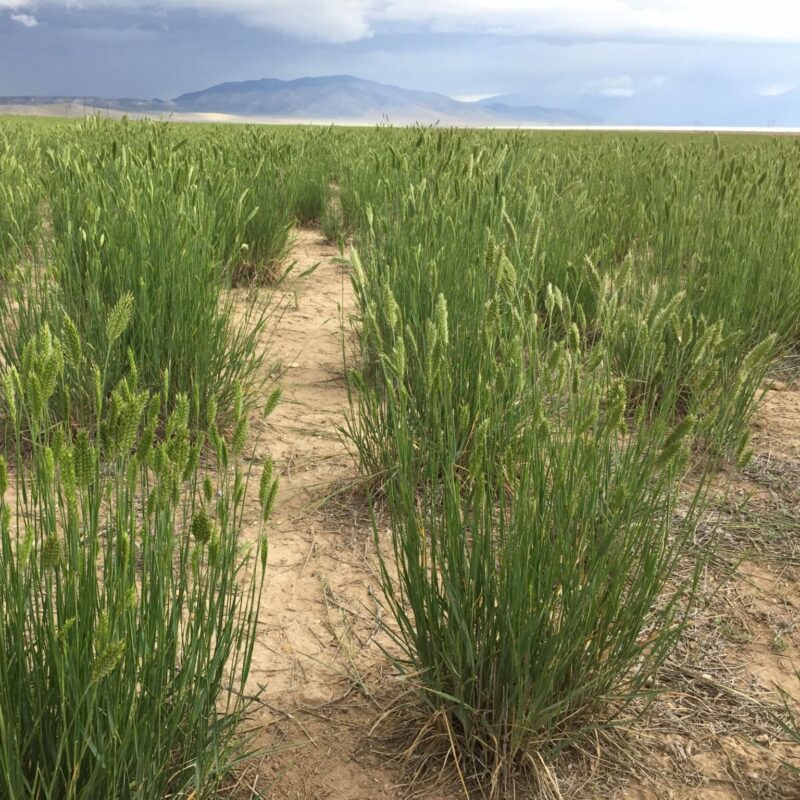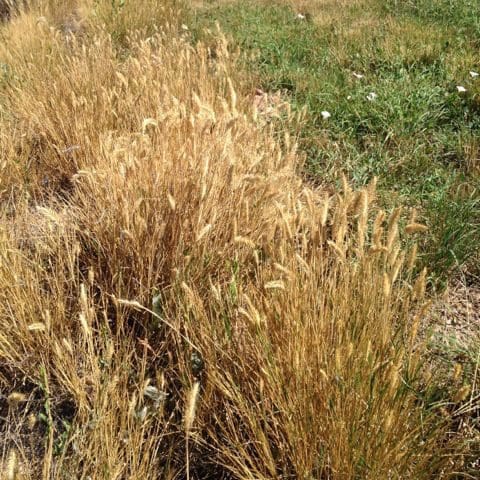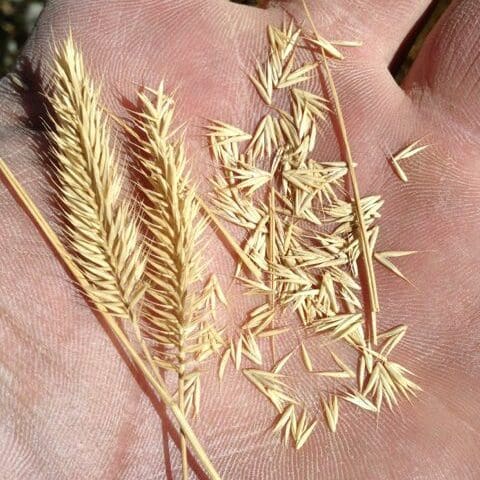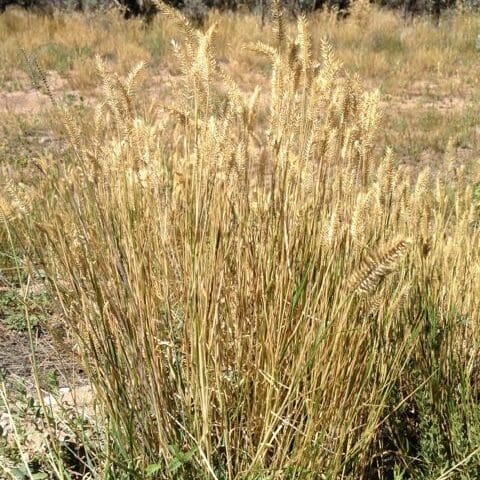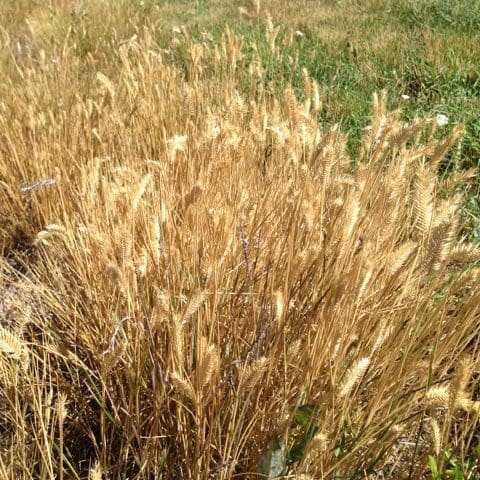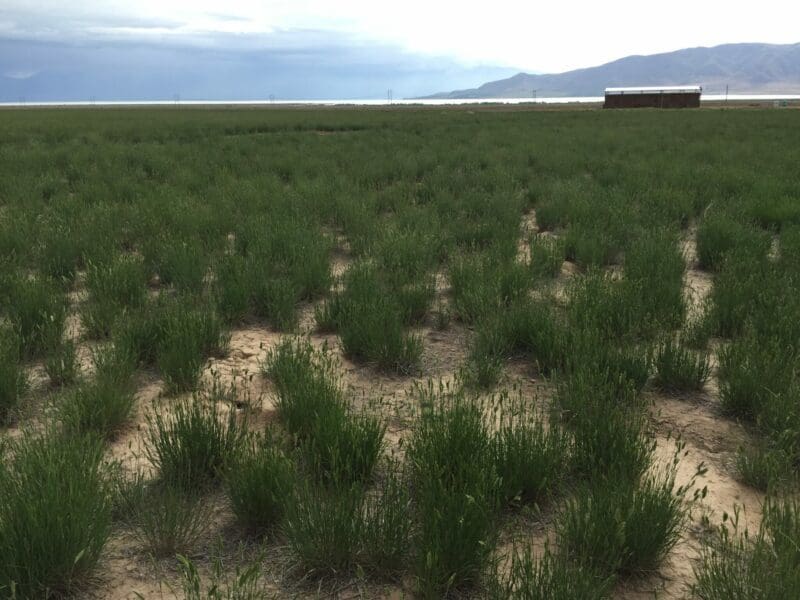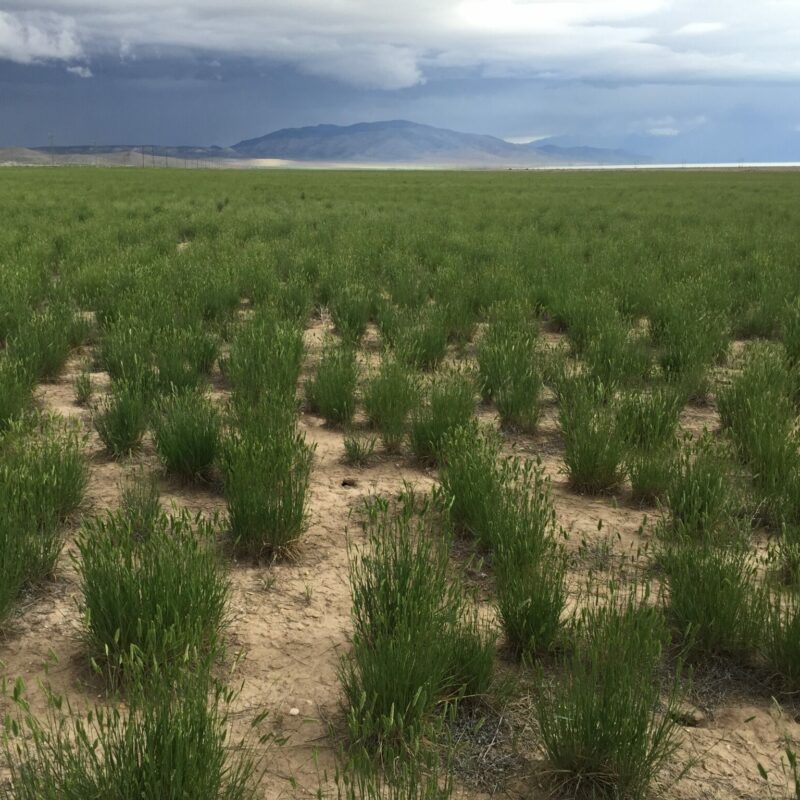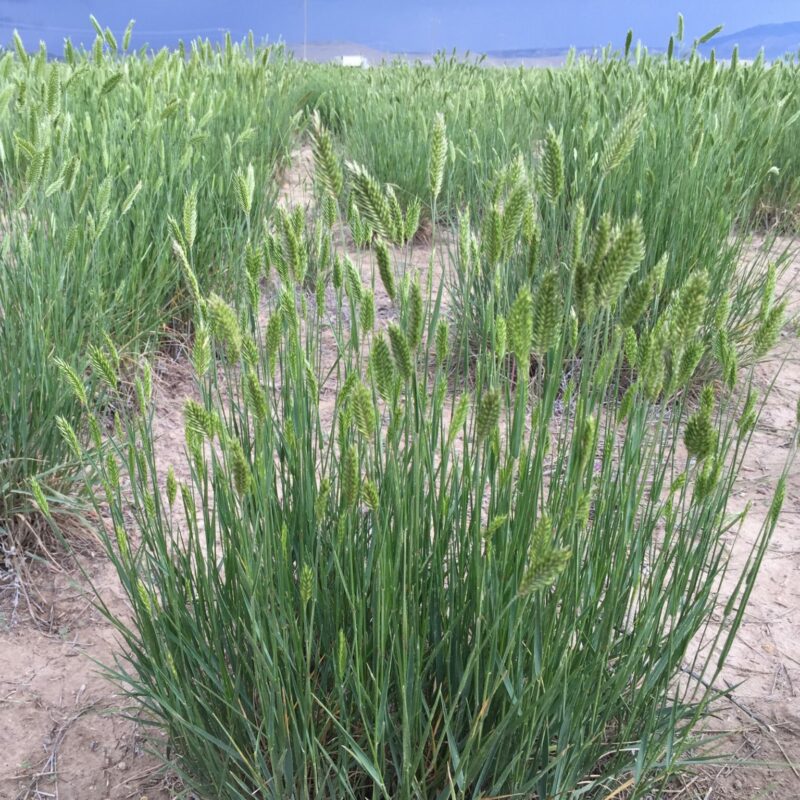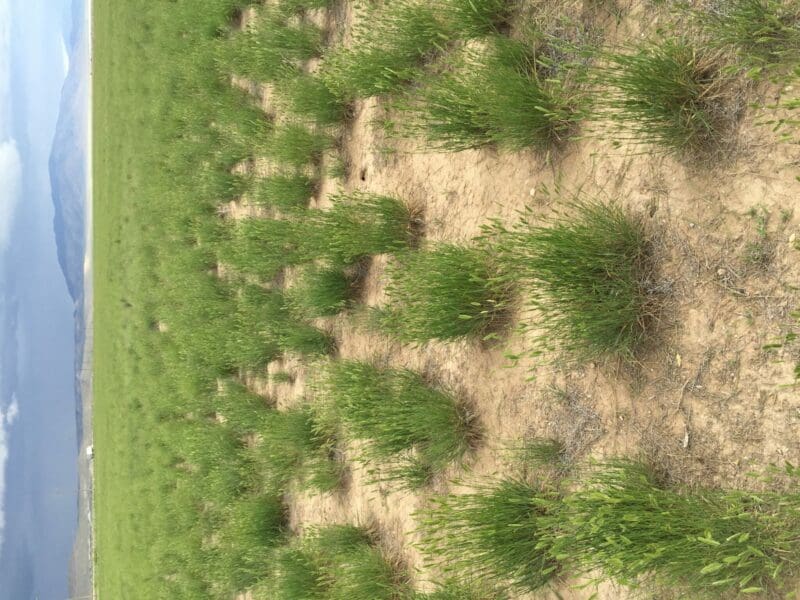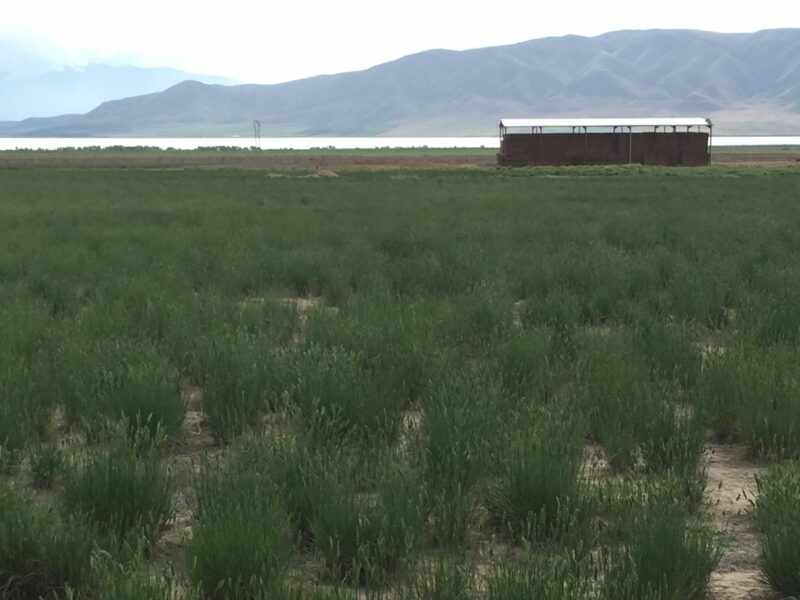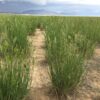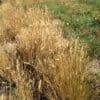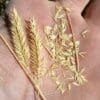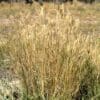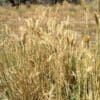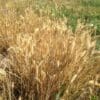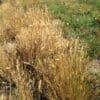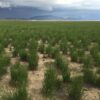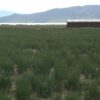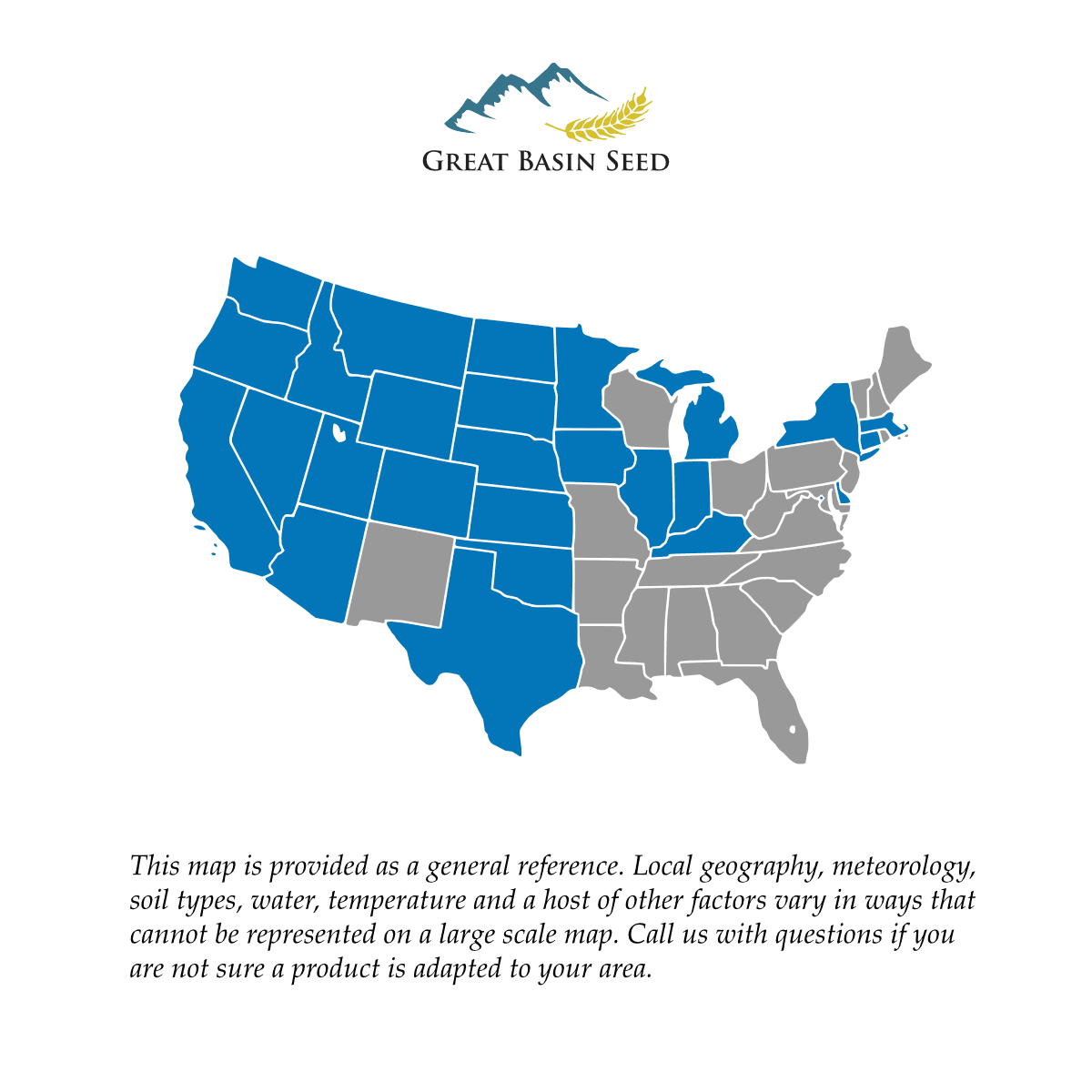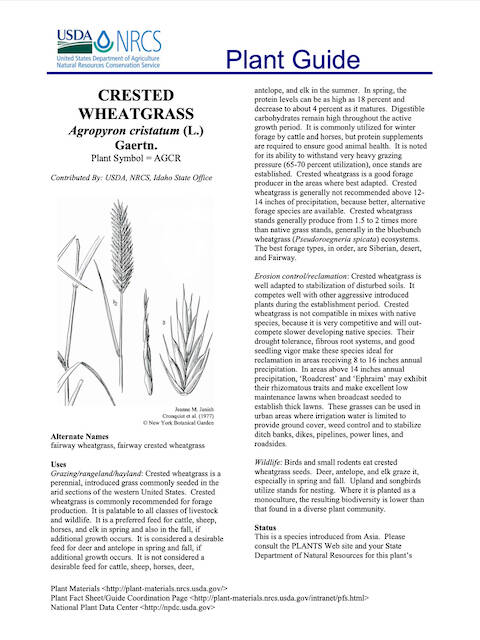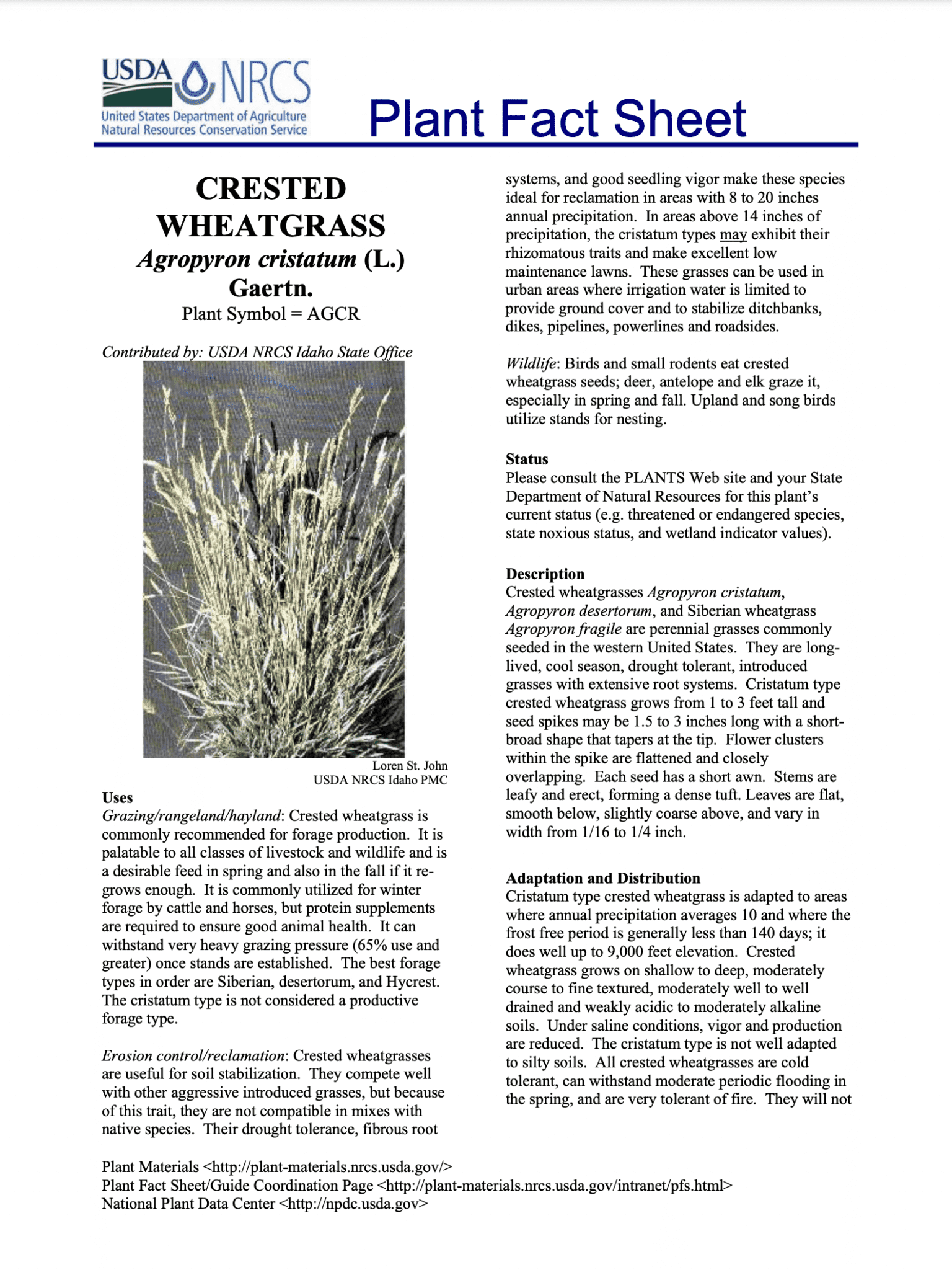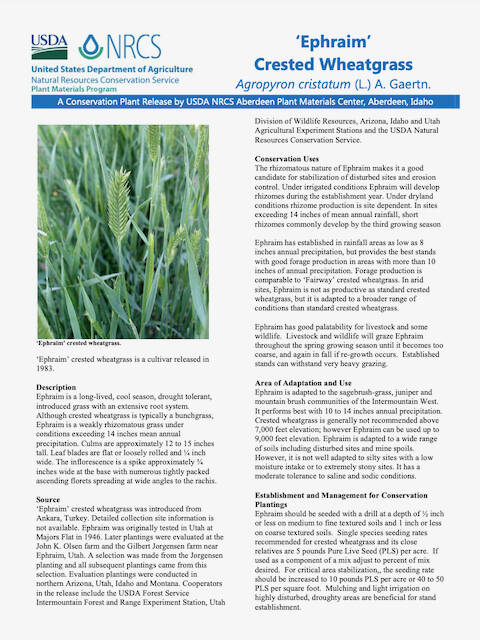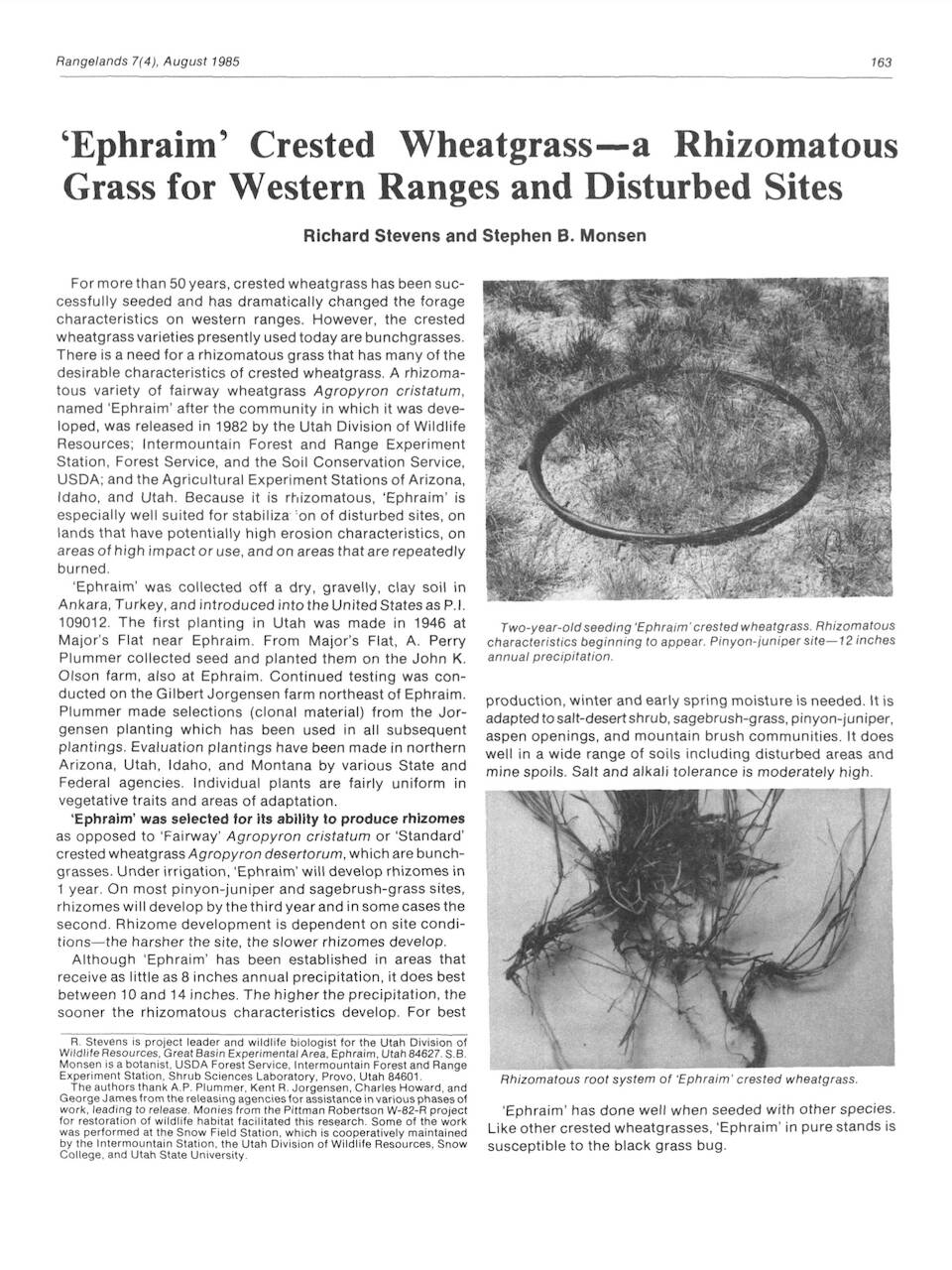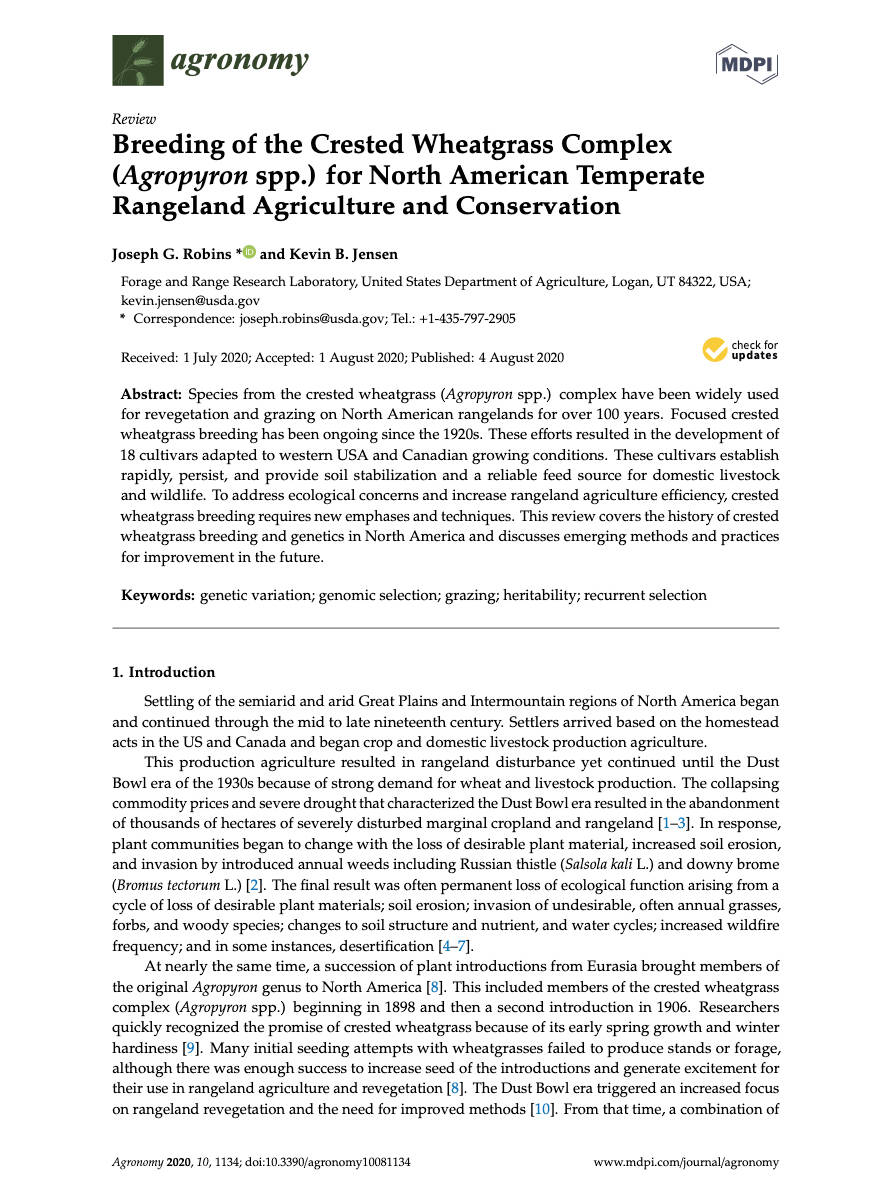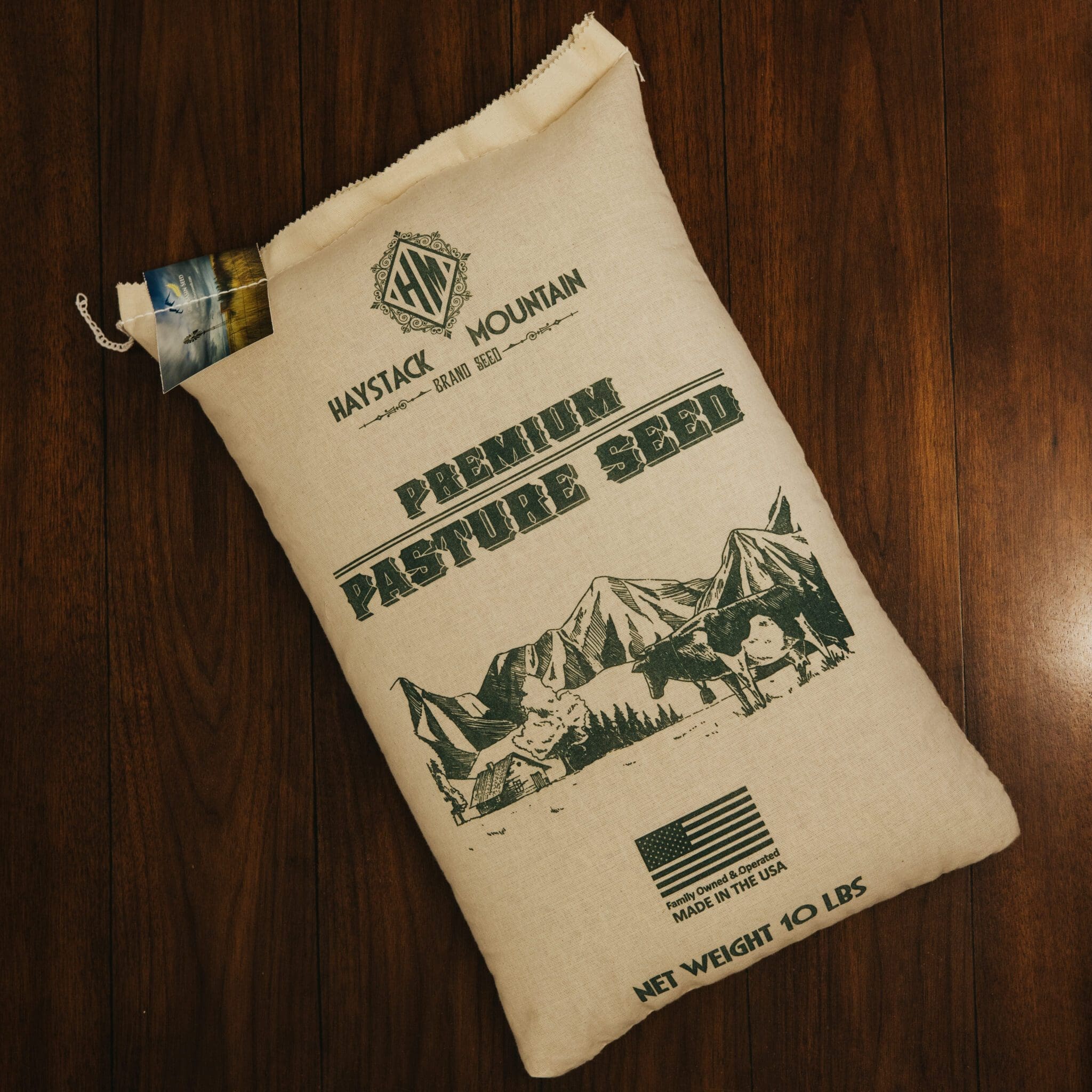Ephraim Crested Wheatgrass
- Long-lived with a deep root system
- Ease of establishment, longevity and broad value
- Used extensively for reclamation, stabilization, erosion control
Out of stock
Min. to Max. Annual Precipitation
32in.
Average Max. Height
Ephraim Crested Wheatgrass is a cool season perennial bunchgrass that is long-lived with a deep root system. It starts growth in early spring and flowers in late spring. Requires a minimum of 10 inches of annual precipitation. Well adapted to disturbed areas, roadsides, and mine spoils. It is used extensively for reclamation, stabilization and erosion control. It prefers well drained soils, it is not adapted to poorly-drained soils or heavy clay soils.
Crested Wheatgrass (Agropyron cristatum) was introduced from Russia, Siberia and Turkey, perhaps as early as 1898. It is a cool season perennial bunchgrass, without rhizomes, growing to a height of 1 to 2 feet. It starts growth in early spring and flowers in late spring. It reproduces from seeds and tillers and may regrow in the fall if moisture is sufficient. It is long-lived with a deep root system. It has good seedling vigor.
The Forest Service Shrub Laboratory in Provo, Utah and Utah Division of Wildlife Resources developed Ephraim Crested Wheatgrass from an accession originating in Turkey. It was released in 1983. It is weakly rhizomatous, with rhizomes being expressed at higher precipitation zones above 14 inches. It is well adapted to disturbed areas, roadsides, and mine spoils. It has been used successfully as a low maintenance turf. It is not well adapted to silty soils. It is a good seed producer.
Crested Wheatgrass can be found on most rangelands of the intermountain west. It is adapted from 2,500-9,000 feet, though it performs best between 4-6,000. It prefers well drained soils, it is not adapted to poorly-drained soils or heavy clay soils. It requires a minimum of 10″ annual precipitation. It has fair tolerance to alkali and acidity.
Crested Wheatgrass produces fair forage. As the grass matures is becomes harsh and protein content drops rapidly. It does, however, yield well and is highly palatable in the spring. It is used extensively for reclamation, stabilization and erosion control. It is a primary component of our Dryland Pasture Mix. Because of ease of establishment, longevity and broad value it is planted more frequently in the intermountain west and desert southwest than any other grass species for dryland pasture, reclamation and stabilization.
Agropyron cristatum should not be confused with Agropyron desertorum, though the two are closely related. Hycrest is a hybrid between A. cristatum and A. desertorum.
There are a number of crested wheatgrass varieties. Use the downloadable documents to help you make the choice most appropriate for your needs.
- Fairway: introduced/released 1983, from Ankara Turkey. Fairway’s rhizomatous growth habit make it well suited for soil stabilization.
- Ephraim: released in 1994, a hybrid of four accessions. Quality forage value, high seedling vigor.
- Roadcrest: shorter and has a finer leaf texture that other varieties, and as the name suggests, is used for roadside reclamation and low maintenance turf areas. It is more sod forming and less clumpy than other crested wheat grasses.
- Kirk: introduced/released from Siberia in 1297. Short and fine-stemmed. Capable of forming sod in dryland areas.
- Douglas: Produces less forage but is leafier than other varieties and stays green longer.
- Hycrest: is a hybrid between Agropyron cristatum and Agropyron desertorum. It is easier to establish than wither of it’s parents.
For additional information see the USDA PLANTS database.
***Click on the “Quick Plant Facts” tab above for more information.
| Common Name & Variety | Scientific Name |
|---|---|
| Crested Wheatgrass | Agropyron cristatum |
| Douglas | Agropyron cristatum var. douglas |
| Ephraim | Agropyron cristatum var. ephraim |
| Roadcrest | Agropyron cristatum var. roadcrest |
| Parkway | Agropyron cristatum var. parkway |
| Ruff | Agropyron cristatum var. ruff |
| Desert or Standard Crested Wheatgrass | Agropyron desertorum |
| Nordan | Agropyron desertorum var. nordan |
| Summit | Agropyron desertorum var. summit |
| Siberian Wheatgrass | Agropyron fragile |
| Vavilov | Agropyron fragile var. vavilov |
| Vavilov II | Agropyron fragile var. vavilov II |
| P-27 | Agropyron fragile var. P-27 |
| Hybrid Crested/Desert Wheatgrass | Agropyron cristatum X Agropyron desertorum |
| Hycrest | Agropyron cristatum X Agropyron desertorum var. Hycrest |
| Hycrest II | Agropyron cristatum X Agropyron desertorum var. Hycrest II |
| CD II | Agropyron cristatum X Agropyron desertorum var. CD II |
Crested Wheatgrass NRCS Plant Guide
Crested Wheatgrass NRCS Plant Guide
PDF version of NRCS Plant Guide & Fact Sheet
Prepared By & Species Coordinator: Daniel G. Ogle, USDA NRCS Idaho State Office, Boise, Idaho.
Crested Wheatgrass NRCS Fact Sheet
Crested Wheatgrass NRCS Fact Sheet
PDF version of NRCS Plant Guide & Fact Sheet
Prepared By & Species Coordinator: Dan Ogle, Plant Materials Specialist USDA NRCS Idaho State Office, Boise, Idaho
Ephraim Crested Wheatgrass Plant Release
Ephraim Crested Wheatgrass Plant Release
Release document for ‘Ephraim’ crested Wheatgrass (Agropyron cristatum). USDA-Natural Resources Conservation Service, Aberdeen Plant Materials Center. Aberdeen, Idaho 83210. Published December 2012.
‘Ephraim’ Crested Wheatgrass – a Rhizomatous Grass for Western Ranges and Disturbed Sites
‘Ephraim’ Crested Wheatgrass – a Rhizomatous Grass for Western Ranges and Disturbed Sites
PDF version of Rangelands publication, August 1985
Richard Stevens and Stephen B. Monsen
Breeding of the Crested Wheatgrass Complex (Agropyron spp.) for North American Temperate Rangeland Agriculture and Conservation
Breeding of the Crested Wheatgrass Complex (Agropyron spp.) for North American Temperate Rangeland Agriculture and Conservation
Joseph G. Robins and Kevin B. Jensen
Forage and Range Research Laboratory, United States Department of Agriculture, Logan, UT
Helpful Links
These are external links helpful in your efforts to better understand this product
A Homeowner’s Guide to Planting Crested Wheatgrass
Four Unconventional Grasses to Know and Love
TurfGrass Trends
August 2000
Who is Great Basin Seed?
Great Basin Seed is a seed company that specializes in seed sales and consultation for home, ranch, farm, range and reclamation. We have been a leader in the seed industry since 1974.
Our History
We've been in the seed business since 1974.
What We Offer
We offer seed for home, farm, ranch, range and reclamation projects.
Meet the Gang
We have the best employees in the world! We are proud of the work they do, and trust them to serve you!
Right: Company founder Lloyd and his wife Paula Stevens in a wildflower seed production field circa 1977
Quick Plant Facts
| Common Name: | Crested Wheatgrass |
|---|---|
| Scientific Name: | |
| Origin: | |
| Available Varieties: | |
| Seeds per Pound: | |
| Best Time to Sow: | |
| Max Sowing Depth: | |
| Sowing Rate | 3-7 PLS lbs. per Acre |
| Growth Season: | |
| Growth Height: | |
| Min. Precipitation | 9-10 Inches Minimum |
| Root Form | Bunchgrass |
| Plant Type: | |
| Lifespan: | |
| Blogpost | https://greatbasinseeds.com/crested-wheatgrass-for-reclamation/ |
| Hardiness Zones: |
